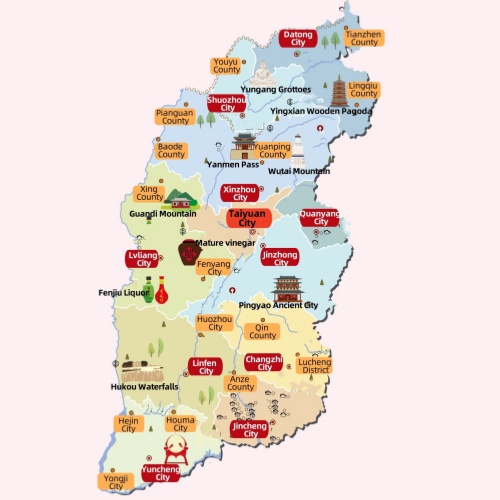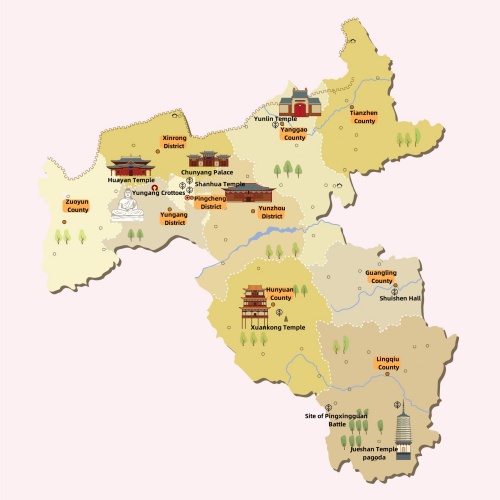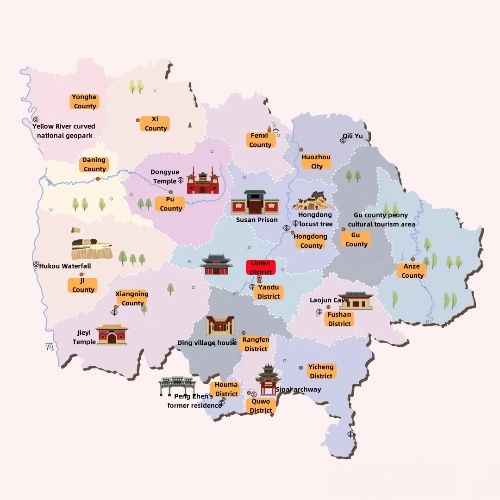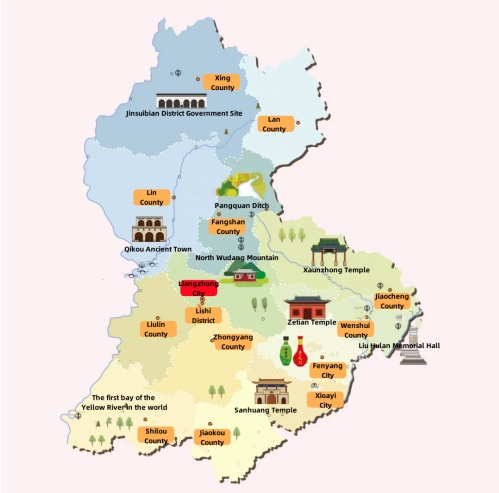The characteristics of the tourism map of Shanxi Province are first reflected in its rich and diverse distribution of attractions. This map is like a carefully drawn treasure map, with fascinating attractions hidden in every direction.
First, le’s look at the north of Shanxi. Here is Datong City, which serves as the gateway to the northern Shanxi. Datong is rich in tourism resources. Among them, the North Mountain Hengshan is famous for its steep terrain and long history, while Huayan Temple is a treasure that combines Buddhist culture with ancient architectural art.

Turning to the south, we come to the region along the Yellow River in Shanxi. Here lies the Hukou Waterfall of the Yellow River, with its powerful water force and thunderous roar, making people feel as if they are in the midst of the magnificent power of nature. In addition, Xiaoxitian is also a major highlight in the south. This well-preserved Buddhist Zen monastery witnesses the glorious history of Shanxi merchants and carries profound Buddhist culture.

Moving on to the west of Shanxi, the main area is the Loess Plateau, with the Luliang Mountain as its backbone. On this land, tourists can appreciate the vastness and beauty of the Loess Plateau. Meanwhile, the most famous feature here is liquor making, and among them, Fen liquor is the most renowned. The history of Fen liquor workshops can be traced back to the Northern Qi Dynasty, more than 1,500 years ago.

Finally, let’s turn to the east of Shanxi. Here, the Taihang Mountain acts as the main ridge, forming a spectacular blocky mountainous region. In this area, tourists can visit the Yungang Grottoes, known as the "Pearl of Eastern Art," to experience the influence of thousand-year-old Buddhist culture. In addition, there is the famous Xuankong Temple, which is cleverly suspended on a cliff and is praised as a miracle in the history of world architecture.

In summary, the characteristic of the Shanxi tourism map lies in its rich and diverse distribution of attractions. From the Taihang Mountain region in the east to the Yellow River area in the south, and then to the Luliang Mountain area in the west and the northern gateway of Jinbei, every direction hides unique scenery and stories. This map serves as a vivid travel guide, guiding tourists to explore the beauty and charm of Shanxi.




































